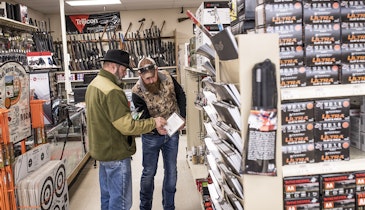You may run across the term “first line belt” or “first line gear” in your reading or discussions with others. A long time ago, someone came up with a way to categorize the different equipment carried by Special Operators. Eventually, it was widely adopted, and we still discuss gear as first, second or third line, depending on what the item is and how and where it is carried. The system is more of a guideline and requires self-analysis of your mission or what you aim to do and what equipment you require for it.
This may seem complicated, but it doesn’t include the basic clothing worn. It’s essentially a way of layering gear. However, on reflection, you’ll consider carrying some of your gear in your clothing due to convenience.
There’s nothing hard and fast, but I’ll break down the three categories and give you some examples. Generally, things are more defined by mission than item. For example, a scout in a long-range patrol behind enemy lines will have a different set of gear than an armed citizen enjoying a range session or a hiker out for a day in the trail. However, several items will remain common to all, such as firearm, ammunition, hydration, first-aid and a utility knife. Those are the bare minimums, and you’ll notice I mention them several times.
First Line Gear: Survival Load
Think of first line gear as those items you always have on you. For a civilian, the belt will be different than for someone in uniform. Although the belt will be used to hold trousers up, it may also serve to carry items like a sidearm and knife. That way, they will always remain with the wearer. In that sense, first line gear is very much oriented toward survival.
In recent years, this has also assumed the moniker of “everyday carry” or EDC, but this can mean a lot of things to as many different types of people.
Generally, we look at first line gear in a tactical sense with dedicated belt, holster, pouches and contents, individual first-aid kit and knife. I want to point out that any IFAK should include a tourniquet and that the user should know how to use all of the items in their kit.
You’ll often hear this referred to as a “gun belt” or “war belt.” In fact, for the average user, it’s going to be used specifically as a gun belt.
Second Line Gear: Fighting Load
This is more substantial and often includes armor and helmet. It should contain enough to sustain you for up to 24 hours. Confusion often comes over what constitutes first line and second line. Take for example a flashlight. Some would demand that it be included in first line, but others would place it with the second line gear. Once again, take a look at what you’re doing. A weapon light might be mounted to your sidearm while you carry a handheld or headlamp in your second or even third line gear.
Third Line Gear: Sustainment Load
What we categorize as third line gear consists of sustainment items like sleeping gear and shelters. It could also encompass extra clothing, food and bulkier mission-related equipment. Expect to survive for about 72 hours with third line gear.
As the load becomes more complicated, you may also notice that each set of equipment builds upon the capability of the others. There may also be redundancies in capability. Light sources are a great example. Redundancy is especially relevant when considering weapons, medical and communications.
Depending on the role or mission of the individual, additional gear may be added, such as signaling devices, geo-location equipment and so on. It all comes down to where and how it’s carried. I’ve even some referring to fourth line gear, depending on an organization’s standard operating procedure.
If you are a retailer but don’t specialize in load carriage, you might want to consider at least introducing the basic items that make up first line gear. If you sell firearms, chances are good you already offer gun belts and holsters as well as magazine pouches. That gets you most of the way there. Add a utility pouch, IFAK and knife/multi-tool and your customers will be outfitted with the basics that will serve them well on the range or in real-world use.
Like anything else, price and quality are all over the place, and there are loads of manufacturers. In fact, as a retailer, some of the brands you already carry may actually offer some of this gear. Likewise, brand/manufacturer reps may have a load carriage line you can pick up. I might mention that the margin on accessories is generally much higher than firearms. You know your customer, so look for those brands that will complement what you already sell and bring value.
Whether you just want to increase your knowledge of the tactical industry as a whole or broaden your offerings and customer base, consider reading more on the internet about the different equipment components that make up first, second, and third line gear. Some people get quite passionate about what gear belongs where in the hierarchy. If anything, it will create some interesting discussions. Regardless, it’s a system that can be used by anyone to delineate the items they use and prioritize how and where they are carried.






